Goatsbeard, Eastern Goatsbeard, Bride's Feathers - Aruncus dioicus
|
Aruncus dioicus - Goatsbeard, Eastern Goatsbeard, Bride's Feathers. Aruncus dioicus is a tall plant with attractive inflorescence and foliage which grows in shady areas of moist woodland borders. While some authorities recognize up to three additional Asian species, most authorities consider Aruncus dioicus to be the only species in genus. There are four varieties in the United States, some of which have previously also been considered separate species:
- var. acuminatus, found on the west coast from northern California north to Alaska, as well as western Canada.
- var. dioicus, found in the eastern United States from Maine south to Georgia and west to Wisconsin and Mississippi
- var. pubescens, also an eastern species found in nine states in the East and Midwest. There is some discussion that this should not be maintained as a separate variety from var. dioicus.
- var. vulgaris, a species introduced from Europe and now naturalized in 3 states.
Found in:
AK, AL, AR, CA, DC, GA, IA, IL, IN, KY, MA, MD, ME, MI, MO, MS, NC, NJ, NY, OH, OK, OR, PA, SC, TN, VA, WA, WI, WV
Leave comments on Aruncus dioicus at this link. | 
Distribution of Aruncus dioicus in the United States and Canada:
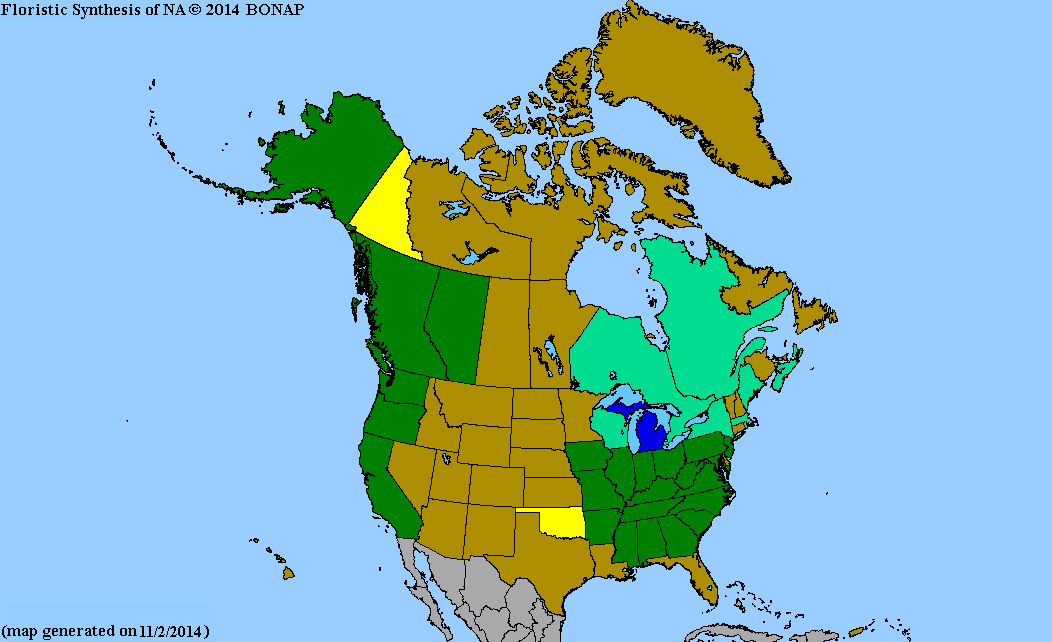
Map courtesy of The Biota of North America Program.
Map color key
Search Our Database: Enter any portion of the Scientific, Common Name, or both.
Do a general Google search of the entire site:
#ad
 Follow USWildflowers on Twitter
| | Site: Ascalon Road, Walker County, GA Date: 2013-June-07 | Photographer: Gerald C Williamson
Nikon D7000 | | The fluffy, feathery appearance of the staminate plant gives it one of its common names, Bride’s Feathers. | | 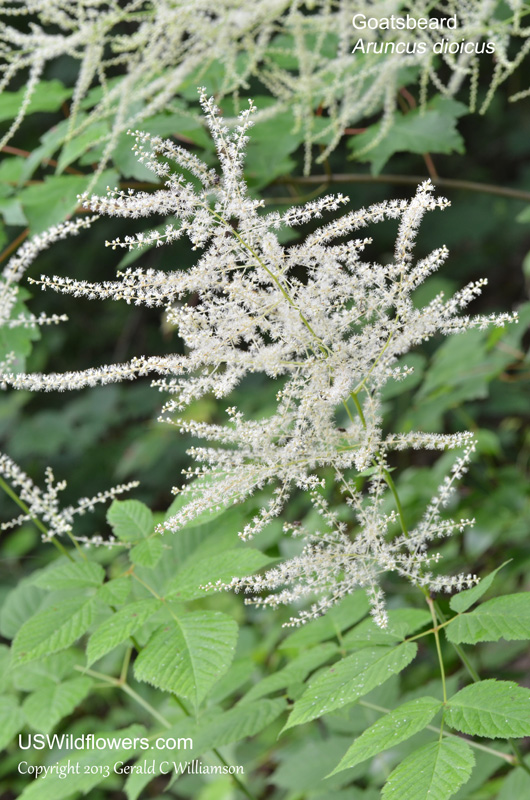
| | Site: Ascalon Road, Walker County, GA Date: 2013-June-07 | Photographer: Gerald C Williamson
Nikon D7000 | | The blossom of the staminate flower of Aruncus dioicus has 15-20 stamens. Those of similar Astilbe biternata have 10 stamens. Aruncus dioicus is dioecious; the pistillate flowers will have 3 pistils (Astilbe biternata has 2.) The inflorescence is racemose and the apex of the raceme is to the left, the older blossoms are to the right in this photo. | | Click on the photo for a larger image
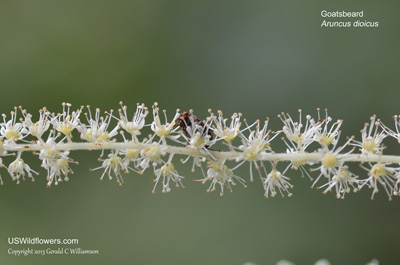
| | Site: Ascalon Road, Walker County, GA Date: 2013-June-07 | Photographer: Gerald C. Williamson
Nikon D7000
Tamron SP 90MM f/2.8 AF Macro | | Goatsbeard usually stands taller than its surrounding forest-margin vegetation, standing up to 6 feet tall and spreading its compound leaves for a plant-spread of up to 4 feet. | | Click on the photo for a larger image
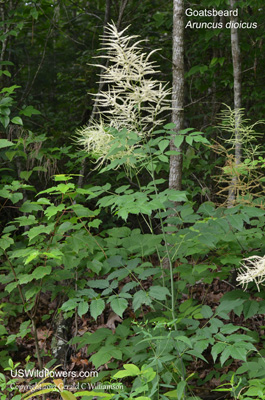
| | Site: Ascalon Road, Walker County, GA Date: 2013-June-07 | Photographer: Gerald C Williamson
Nikon D7000 | | Aruncus dioicus has a compound leaf, usually either bipinnate, as shown here, or occasionally tripinnate. The leaves are large, up to around 20 inches, and the individual leaflets can be 2 up to 5 inches long. The leaflets are toothed, and the terminal leaflet is almost always unlobed. The terminal leaflet of the quite similar plant Astilbe biternata (False Goatsbeard) has a usually 3-lobed terminal leaflet. | | Click on the photo for a larger image
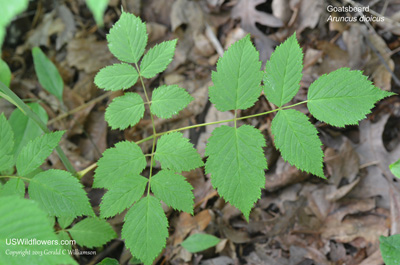
|
References used for identification and information:
|
|
| |
| #ad
|
|






